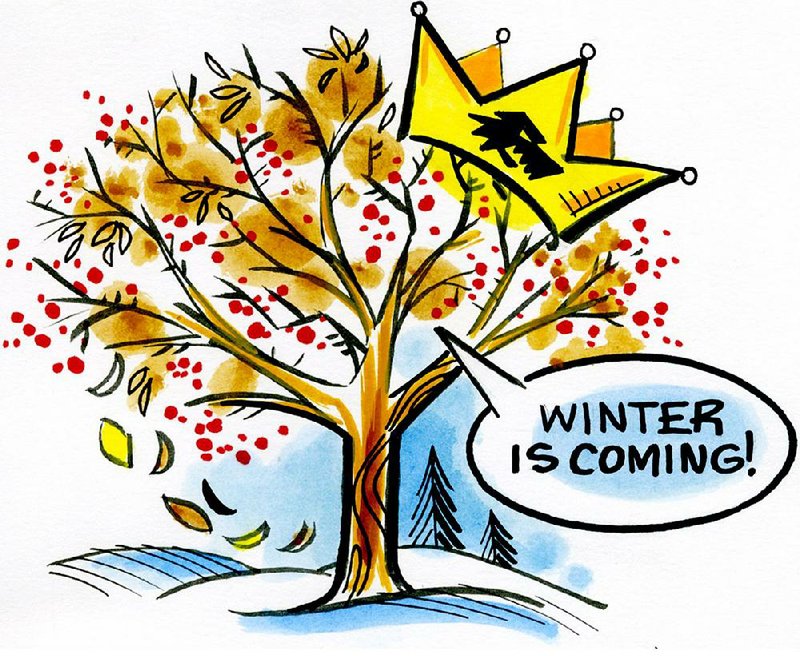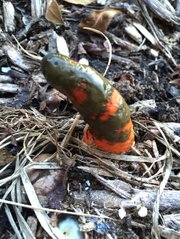Q I'm hoping you can and will answer my question about a "Winter King" hawthorn tree. I read about this tree in an issue of Southern Living. It was used in a garden in Birmingham, Ala., and the description really appealed to me and to the garden committee of my church in Greers Ferry. Is this a tree that can grow in Arkansas? The committee wants to plant a tree as a memorial to a deceased member. Therefore, we are looking for something different and special, and the "Winter King" hawthorn fits that description.
A "Winter King" hawthorn is a wonderful small tree and would be a great choice as a memorial tree. I think we should use more hawthorns in our landscapes. They have beautiful bark in the winter, lovely flowers in the spring and then good berries in the fall. Some varieties do struggle with diseases, specifically rust, but "Winter King" has fairly good disease resistance. The tree has the potential to grow 20 to 30 feet tall. While most hawthorn trees have thorns, they are small on this species. It would be suitable for most of Arkansas. In the hottest, southernmost parts of the state, it might struggle a bit.
Q I live in west Little Rock in a patio home community. Something appeared in my azalea bed this year. It begins with a cluster of mushroom-looking things at the base of the azaleas. It has white spreading roots, and the soil turns white an inch or so down. What is it and how do I get rid of this disgusting thing?
A The rains and mild weather in December spurred on many types of mushrooms. The one you have is a bit obnoxious in that it smells to high heaven -- thus its common name, "stinkhorn mushroom." They grow in damp wood mulch and once mature, they emit a foul-smelling green slime (which yours have) that attracts flies and beetles to the area to transmit the spores to other areas, so total eradication is close to impossible. Knock them down and dispose of them as soon as you spot them or smell them, and aerate the soil and it should help. The sooner they are gone, the less chance the flies can get in there and repopulate them.
Q We received a decorative tree face for Christmas. Are those OK to stick on trees?
A Everyone has an opinion on the safety of poking holes in trees, but people have been doing it for years with the old clotheslines or hanging bird feeders or wind chimes. Be aware that any time a wound is made, it can be a source of infection. Some trees are more forgiving than others. I would not intentionally poke holes or nails into a thin-skinned tree like a dogwood or Japanese maple, but on large, woody, mature trees, a few holes should not do much damage. It is girdling, cutting the bark all the way around, that can kill a tree. I would find a large, healthy tree, add your whimsical face and enjoy.
Q I was given a potted amaryllis bulb several years ago. It has bloomed annually and has multiplied. I have potted the new bulbs and am running out of space. Each winter I trim them back and bring them indoors. Will they survive outdoors if planted in a flower bed and covered with mulch? Will they continue to multiply and bloom?
A While the answer should be no -- they are supposedly rated as hardy only to 30 degrees -- many Arkansas gardeners have been planting them outside and they are surviving quite nicely, even during the past two hard winters. I wouldn't plant them outside now, but wait until spring, allowing the soil to warm up. Then divide some and plant outside in a sunny, well-drained location. Let them get established all growing season and, next fall after a frost, cut the foliage. Mulch and wait to see what happens the following spring. They should bloom for you in late spring, and they do multiply. I would keep a few inside just as a backup.
Janet B. Carson is a horticulture specialist for the University of Arkansas Cooperative Extension Service. Write to her at 2301 S. University Ave., Little Rock, Ark. 72204 or email her at
jcarson@arkansasonline.com
HomeStyle on 01/16/2016

